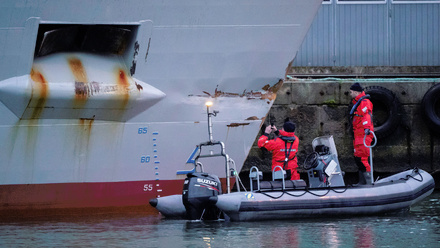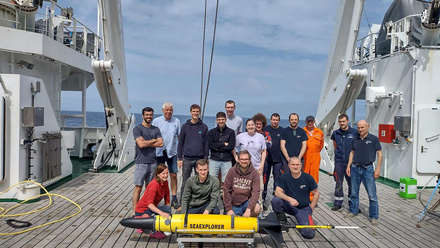Protecting the Arctic and Antarctic key aim for new group
The Polar Regions Special Interest Group will focus on activities to make a ‘meaningful impact’.
We sit down and talk with Conor Savage, Co-Chair of Sea Your Future, Marine Mammals Special Interest Group committee member, and early career representative on the IMarEST Technical Leadership Board, about his new venture: being Chair of the recently created Polar Regions Special Interest Group.
Why did you decide to create a Polar Regions SIG (Special Interest Group)?
I wanted to bring together and foster a vibrant community of professionals, researchers, and enthusiasts who are dedicated to our planet’s polar regions, to give us a space to work together on deliverables and activities related to the Arctic and Antarctic.
I want the Polar Regions SIG to provide a platform for members to make a meaningful impact on the stewardship of the Arctic and Antarctic, addressing the unique challenges and opportunities presented by these remote environments [and] ensuring that they continue to be better understood, respected, and protected for generations to come.
What kinds of activities do you have planned?
We’re going to focus on professional development [by] organising a range of webinars and workshops designed to enhance expertise in polar matters. We’ve already got our first webinar coming up: Introduction to Arctic Frontiers.
Arctic Frontiers is a non-profit organisation based in Tromsø, Norway. The focus of the organisation is to bring together scientists, policymakers, businesses and local communities for discussions on key Arctic issues and to be a catalyst for dialogue and sustainable solutions.
Each year in January, they host a large conference, which features science sessions, panel discussions and networking events. Year-round, they also host a series of seminars and workshops in various countries and have an extensive youth and early career development program.
At their 2025 conference, themes highly relevant to IMarEST will include technology developments for green shipping, blue/green fuels for maritime activities, ocean security and marine biology.
There are two other webinars not close behind so keep an eye out for them.
We also want to work to influence policy, helping shape international regulations and practices concerning polar-related activities through the creation of position papers, technical reports, and policy statements. We’re still deciding on the focus for the first one of these, so watch this space.
Who should join the SIG?
You should join the Polar Regions SIG if you’re interested in the Arctic and or Antarctic, be it in a personal or professional capacity. We want to build a global network of polar enthusiasts and specialists to share insights and collaborate on activities, so we’re welcoming as broad a church of SIG members as possible.
Are you looking for committee members?
Yes, I’m definitely on the lookout for committee members. Whilst I haven’t set specific positions on the committee as of yet, this is something I think needs to be done [with] the initial cohort of members. I imagine they will be based around our deliverables such as webinars and policy papers, as well as our activities, such as networking.
Is there anything else you’d like to say about the Polar Regions SIG?
Please join! The more SIG members we have onboard, the more we’re going to be able to deliver.
Even if someone decides not to join as a member, I’d love to hear from them as an IMarEST Member, to hear any ideas on what activities we should be focusing [on].
Whilst I’m happy with an initial focus on webinars and policy papers, I plan for us to expand our remit beyond this as we grow in size. For instance, by engaging with policymakers on Arctic- and Antarctic-related issues.
Join a community of professionals, researchers, and enthusiasts in the Polar Regions SIG.
Newsletter image: Conor Savage experiencing the northern lights; credit: Conor Savage.
Main image: Arctic landscape in Svalbard, a Norwegian archipelago; credit: Shutterstock.
Tell us what you think about this article by joining the discussion on IMarEST Connect.






